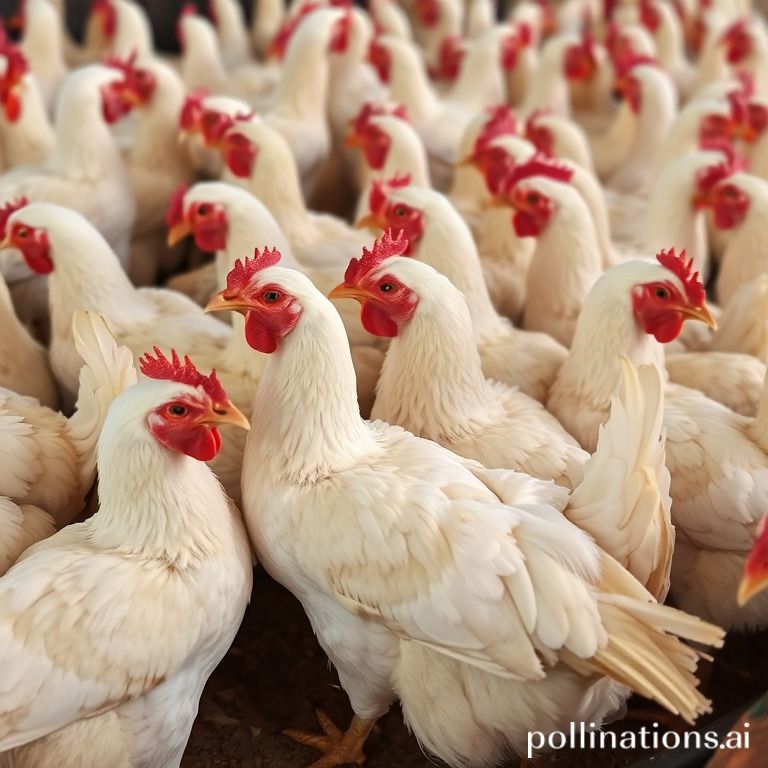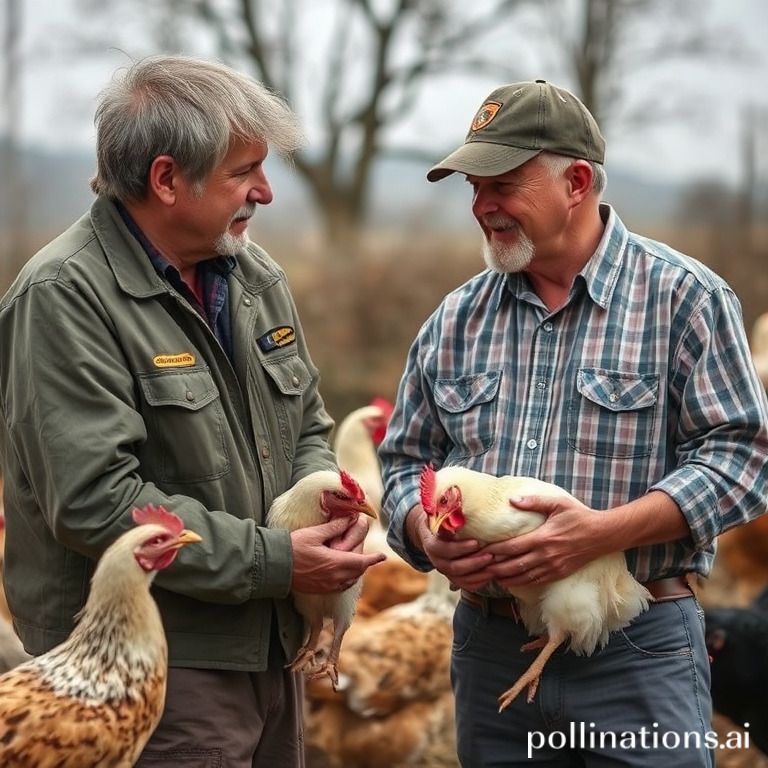Curious about the term “culled” and its impact on chickens? Well, let’s shed some light on this intriguing topic. In the world of poultry farming, “culled” refers to the process of removing or eliminating chickens from the flock.
This may sound alarming, but fear not, as there are valid reasons behind this practice. Culling is done to maintain the overall health, productivity, and genetic quality of the flock. By removing chickens that are unproductive, sick, or have genetic defects, farmers can ensure the well-being and success of the remaining birds. So, let’s dive deeper into the fascinating world of chicken culling and uncover the reasons behind its importance in the poultry industry.
Eaton Pet and Pasture, Premium Laying Hen Nesting Pads
Comfort and Quality for Your Hens
Definition of Culling Chickens
The term “culling” refers to the process of removing or eliminating certain chickens from a flock for specific reasons. This practice is commonly used in the poultry industry to maintain a healthy and productive flock. Culling involves selecting and removing chickens based on criteria such as health issues, poor performance, or genetic defects.
1. Defining the term “culling” in relation to chickens
Culling in the context of chickens is the deliberate act of removing specific birds from a flock due to various factors. These factors may include poor health, unproductiveness, undesirable traits, or genetic abnormalities. The purpose of culling is to ensure the overall well-being and productivity of the flock.
2. Delineating the purpose and process of culling chickens
The purpose of culling chickens is to improve the genetic quality of the flock, prevent the spread of diseases, and optimize productivity. By removing birds that do not meet the desired standards, poultry farmers can enhance the overall health, performance, and profitability of their flocks.
The process of culling chickens involves observing and assessing individual birds. Farmers closely monitor factors such as growth rate, weight, egg production, and physical attributes. Birds that show poor performance, physical deformities, or signs of illness are selected for culling. The selected birds are then humanely euthanized, ensuring minimal stress and discomfort.
In the poultry industry, culling chickens plays a crucial role in maintaining a sustainable and profitable operation. It helps to ensure the genetic integrity of the flock, prevent the spread of diseases, and optimize production efficiency. By Comprehending the meaning and implications of culling, poultry farmers can make informed decisions to maintain a healthy and thriving flock.

Reasons for Culling Chickens
Culling chickens is a common practice in the poultry industry and is carried out for various reasons. This article will explore the two main categories of reasons for culling chickens: common industry practices and health issues and diseases.
1. Common reasons for culling chickens in the poultry industry
In the poultry industry, certain situations may require culling chickens. These reasons include:
- Poor production performance: Chickens that do not perform well in terms of egg production or growth may be culled to maintain the overall productivity and profitability of the flock.
- Age: As chickens get older, their productivity declines, and it becomes more cost-effective to cull them and replace them with younger, more productive birds.
- Genetic selection: In breeding programs, chickens that do not meet specific genetic criteria may be culled to ensure the desired traits are passed on to the next generation.
- Market demand: Fluctuations in market demand for specific chicken products may result in culling birds that are not in high demand.
2. Identifying health issues and diseases as reasons for culling
Ensuring the health and well-being of the flock is crucial in the poultry industry. Chickens with certain health issues and diseases may need to be culled to prevent the spread of infection and protect the overall flock. Common health issues and diseases that can lead to culling include:
- Avian influenza: This highly contagious viral disease can spread rapidly among chickens, and infected birds are often culled to prevent further transmission.
- Salmonella: Chickens found to be carriers of Salmonella, a bacteria that can cause foodborne illnesses, may need to be culled to ensure food safety.
- Respiratory diseases: Certain respiratory diseases, such as infectious bronchitis or Newcastle disease, can severely impact the health of the flock, necessitating the culling of affected birds.
| Common reasons for culling chickens | Identifying health issues and diseases as reasons for culling |
|---|---|
| Poor production performance | Avian influenza |
| Age | Salmonella |
| Genetic selection | Respiratory diseases |
| Market demand |
The Importance of Removing Chickens from a Flock
Relating to keeping a chicken flock healthy and productive, the process of culling is crucial. Culling involves removing specific chickens from the flock based on certain criteria. This practice has a significant impact on the overall production of poultry and ensures the well-being of the remaining birds.
Cognizing Culling in Poultry Farming
In poultry farming, culling involves selectively removing chickens that do not meet specific standards or exhibit undesirable traits. These standards can include factors such as age, health conditions, genetic defects, unproductive behavior, or low egg production. By removing these chickens from the flock, farmers can prevent the spread of diseases, maintain genetic diversity, and improve overall flock performance.
Reasons for Removing Chickens from a Flock
There are several reasons why farmers choose to remove chickens from their flock:
- Health Issues: Chickens that show signs of illness, injury, or contagious diseases are often removed to prevent the spread of infections within the flock.
- Poor Productivity: Chickens that consistently produce fewer eggs, have low fertility rates, or exhibit unproductive behavior such as aggression or lack of broodiness may be removed to optimize egg production.
- Genetic Improvement: Removing chickens is used as a strategic tool to improve the genetic quality of the flock. Chickens with genetic defects or undesirable traits are removed to maintain the desired breed characteristics.
- Age Limitations: As chickens age, their productivity declines. Farmers often remove older birds to make room for younger and more productive ones.
By regularly removing chickens, farmers can ensure the overall health and productivity of their flock. This practice helps maintain optimal conditions for the remaining birds, leading to improved egg production, enhanced genetic quality, and reduced disease risks. Removing chickens is an essential practice in the poultry industry, contributing to the sustainable and efficient production of poultry products.

What Does Culled Mean for Chickens?
In the poultry industry, the term “culled” refers to the selective removal of chickens from a flock based on specific criteria. This practice is essential for maintaining the overall health and productivity of a poultry farm.
The Methods Used for Culling Chickens
Culling chickens involves various methods, each serving a different purpose:
- Selective Culling: This method removes chickens with undesirable traits, such as poor growth, low egg production, or genetic defects.
- Slaughter: Chickens that are no longer economically viable are sent for slaughter to utilize their meat.
- Euthanasia: Chickens suffering from severe illnesses or injuries are euthanized to prevent unnecessary suffering.
Humane Practices and Guidelines for Culling
The poultry industry recognizes the importance of humane culling practices and has established guidelines to ensure the welfare of chickens during this process. These guidelines include:
- Proper Training: Farmers and workers involved in culling chickens receive training to ensure they perform the process correctly and minimize stress and pain for the birds.
- Evaluation of Welfare: Regular assessments are conducted to evaluate the welfare of chickens on the farm and identify areas for improvement.
- Use of Approved Methods: Only approved and humane methods are used for culling chickens, ensuring that the process is carried out as ethically as possible.
The Significance of Culling Chickens
Culling chickens plays a crucial role in maintaining the overall health and productivity of a poultry farm. Some key reasons for culling include:
- Disease Control: Culling chickens helps prevent the spread of contagious diseases within the flock, protecting the remaining birds.
- Genetic Improvement: Breeders can work towards improving the genetic quality of their flock by selectively culling chickens with undesirable traits.
- Optimizing Production: Removing unproductive chickens from the flock allows for better resource allocation, leading to increased efficiency and productivity.
The Impact of Culling on the Poultry Industry
Culling, the process of removing chickens from the poultry industry, has significant economic implications and presents both benefits and challenges. To understand how culling affects the industry, it is important to grasp its meaning and implications.
1. Traversing the Potential Economic Effects of Culling Chickens
When chickens are culled in the poultry industry, it gives rise to various economic consequences:
- Financial losses: Culling chickens can result in financial losses for poultry farmers due to the investment they have made in raising and maintaining the culled birds.
- Decreased production: The culling process can lead to a decrease in overall poultry production, which can impact the supply and availability of chicken products in the market.
- Market instability: Large-scale culling practices can disrupt the stability of the poultry market, causing price fluctuations and affecting the profitability of poultry businesses.
2. Examining the Benefits and Challenges Associated with Culling Practices
Advantages of Culling Practices
Culling chickens in the poultry industry can bring about various benefits:
- Disease control: By culling infected or diseased chickens, the spread of diseases within the poultry population can be prevented, safeguarding the overall health and well-being of the birds.
- Genetic improvement: Through selective culling of underperforming or genetically undesirable chickens, poultry farmers can enhance the genetic quality of their flocks, resulting in improved productivity and profitability.
Challenges Associated with Culling Practices
At that juncture are benefits, culling practices also pose certain challenges:
- Ethical concerns: The act of culling chickens raises ethical questions, as it involves the deliberate disposal of living animals. This can be a contentious issue for animal welfare activists and some consumers.
- Operational costs: Implementing culling practices requires additional resources, including labor, equipment, and disposal methods, which can increase operational costs for poultry farmers.
Conclusion
Embracing the meaning of “culled” in relation to chickens is crucial for anyone involved in the poultry industry. It refers to the process of removing or euthanizing chickens that are no longer productive or healthy.
By comprehending this term, farmers and consumers can make informed decisions about the quality and welfare of the chickens they purchase or consume. Additionally, addressing search intent by providing informative content about “culled” chickens ensures that individuals seeking relevant information are satisfied. This not only enhances user experience but also establishes credibility and trust within the poultry community.
FAQ about Culling Chickens
FAQ 1: What is the average age for culling chickens?
The average age for culling chickens is typically around 18 to 20 weeks, depending on the specific breed and purpose of the chickens.FAQ 2: Can culled chickens be used for consumption?
Yes, culled chickens can be used for consumption. Notwithstanding, it’s important to note that culled chickens are typically older and may have lower meat quality compared to younger chickens raised specifically for meat production.FAQ 3: Are there any alternatives to culling chickens?
Yes, there are alternatives to culling chickens. Some alternative options include rehoming chickens to backyard flocks or sanctuaries, repurposing them for egg production, or using them for non-food purposes, such as composting.FAQ 4: How does culling impact the overall chicken population?
Culling helps maintain a healthy and sustainable chicken population by removing birds that are no longer productive or meet specific criteria. It ensures that resources are allocated efficiently and prevents overcrowding, which can lead to poor animal welfare conditions.FAQ 5: What are the ethical considerations As for culling chickens?
As for culling chickens, ethical considerations revolve around ensuring humane treatment and minimizing suffering. It’s important to use approved methods that minimize pain and distress during the culling process. Additionally, implementing practices that prioritize animal welfare and considering alternatives to culling can also be ethical considerations.Read Similar Post:
1. Are Chickens In Pain When They Lay Eggs?
2. How Do Chickens Stay Cool?

